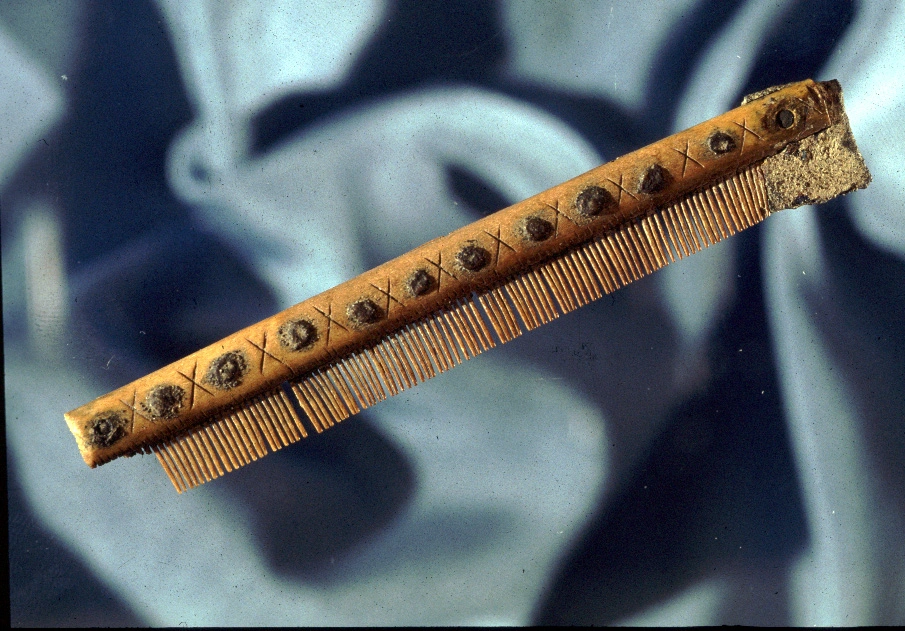A Small Norwegian Town: Kirkwall in the Middle Ages


A small Norwegian town grew up in medieval times on a group of islands. It was on almost the same line of latitude as Bergen on the Norwegian mainland, 490km away across the North Sea. Founded according to tradition in the 11th century, at a spot where a stream ran into a sheltered harbour, it was in an ideal position relative to the Norse trade routes of the North Atlantic, and to the fertile farmland of the islands themselves. The islands were ruled by earls who owed allegiance to the king of Norway. That town was Kirkwall.


Because of a lack of historical references and of excavation in the area, very little is known of the earliest part of the town. The Orkneyinga Saga records that at this time “Kirkjuvagr” was a market centre with very few buildings. An arch from an early church in this area, the Church of St Olaf, survives, and the museum contains a hog-backed gravestone from St Olaf’s churchyard. An 11th -century earl was making preparations for entertaining his men during the winter in this area, shortly before he was murdered during a power struggle. This suggests that he must have had a feasting hall here.


The town received a boost about a hundred years later in the 12th century, when another earl, also murdered during a power struggle, was declared a saint. One of his successors built a small but extremely beautiful Romanesque cathedral to house his bones, a short distance to the south of the early settlement. The early settlement, ruled by the earl, became known as the ‘Burgh’, and the area around the cathedral, under the rule of the church, was known as the ‘Laverock’.

The little town developed along the natural shoreline, facing west over the bay. Today the line of modern Shore Street – Bridge Street – Albert Street – Broad Street – Victoria Street – Main Street follows that shoreline. Evidence from excavations suggests that although there was some reclamation during the medieval period, most of the infilling of the bay is 19th century. Originally the houses would have been built on the inland side of the street and only later, as land was reclaimed, on the shore side, like the 16th century buildings which are now home to The Orkney Museum.

Ships would originally have beached on the shore beside the little 11th century settlement, unloaded at low tide, and then sailed off on the next high tide. For traditional Viking trading ships, beaches were adequate, but cogs, which replaced them for carrying cargo around the North Sea during the 13th century, needed a wharf. There were probably timber wharfs along the shore to accommodate them, and a number of jetties have been found in gardens of houses on the west side of the main street. Remains of a small jetty were found during an excavation in the basement of The Orkney Museum, underneath the present curator’s office!

Orkney suffered badly during the epidemic of bubonic plague in the 14th century. There are few historical references to the “Black Death” in Scotland and Norway, but mortality was high and the economic effects far-reaching. The Icelandic “Lawman’s Annal” refers to the same disease affecting Orkney. The Little Ice Age was already kicking in, and the whole of Europe had experienced a series of famines, including a severe famine in the early 14th century, followed by a cattle plague. Orkney must have been affected by these events. By this time the Norwegian king ruled Orkney through Scottish earls, and links with Scotland were growing stronger. One of these earls, Henry Sinclair, built a castle on the seashore in 1379, defended by a curtain wall and a great tower. Unfortunately this castle was completely demolished in the 17th century, although foundations turn up whenever the council makes a hole in the road in the area of Castle Street.

A number of small excavations have taken place in Kirkwall over the years and have recovered many everyday items used by the medieval citizens of Kirkwall. Many of these can be seen in the Medieval gallery at The Orkney Museum. They cooked their food in unglazed grass-tempered cooking pots, which may have been made locally, and poured their ale from green-glazed jugs made of both red and white wares imported from Scotland. A group of glazed sherds found in the Tankerness House excavations were made of a ware produced in Yorkshire in the 13th and 14th centuries and found in medieval towns all along the east coast of Scotland and England. Some of these sherds, from the orientation of the glaze and wheel marks, may have come from a vessel called an “aquamanile”, used for pouring water over the hands into a basin held below.



This 13th century antler comb (broken) with bronze rivets and end plate is thought to have been made in Norway. It probably comes from a waterlogged ditch excavated at the Earl’s Palace.


The better-off citizens of the town could afford to wear expensive jewellery. This man’s gold ring with the stone missing comes from Waterfield Road, Kirkwall and is probably mid 13th-14th century in date. It may have been made in the Low Countries or in Norway.

They wore decorated leather shoes, like those found with scraps of waste leather in a water main trench in Laing Street.
The 15th century saw the end of the small Norwegian town. It became a small Scottish town, when the King of Norway and Denmark couldn’t pay the dowry he had promised when his daughter married the King of Scotland. The Orkney Islands were handed over in 1468 as a pledge which was never redeemed, and were formally annexed by Scotland in 1472.

